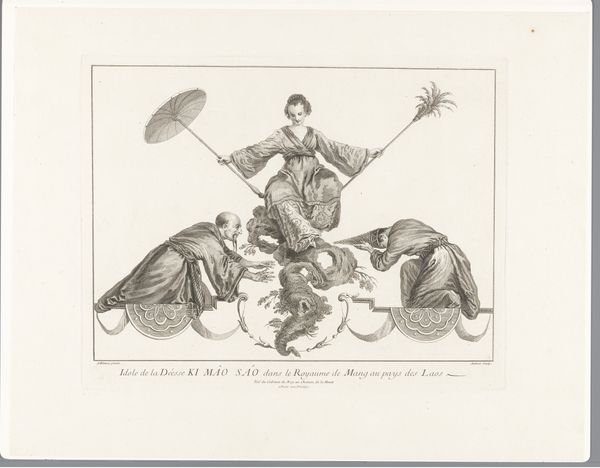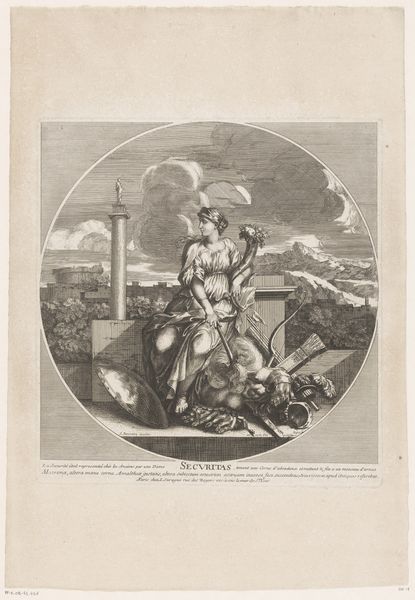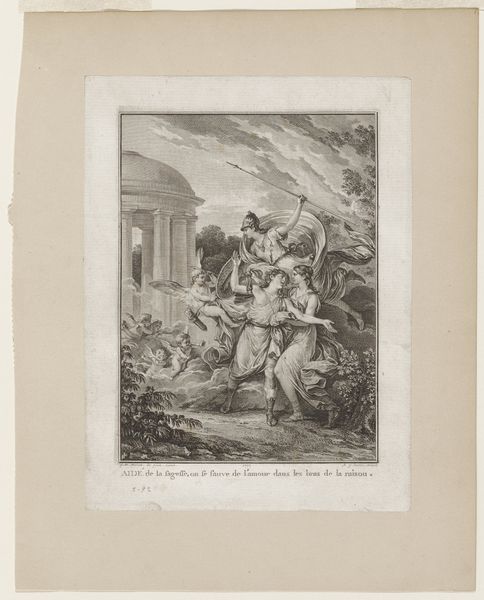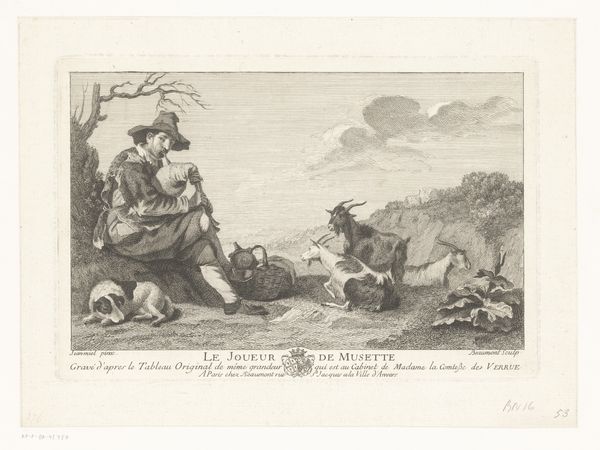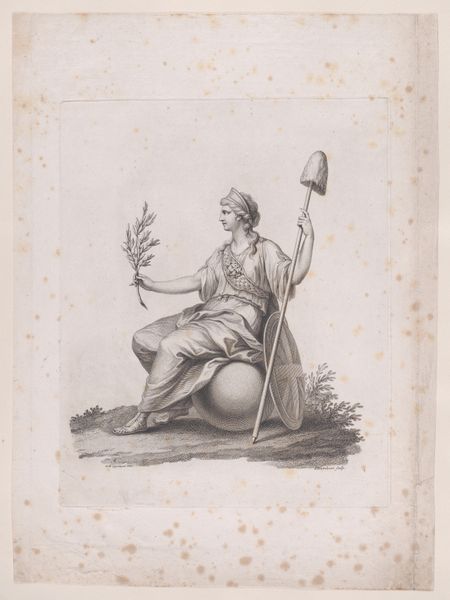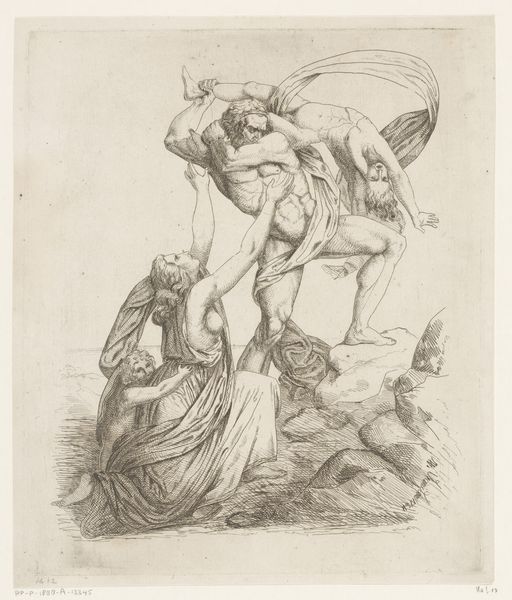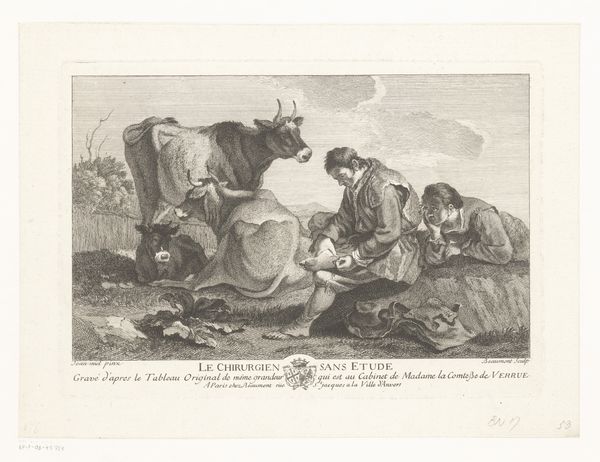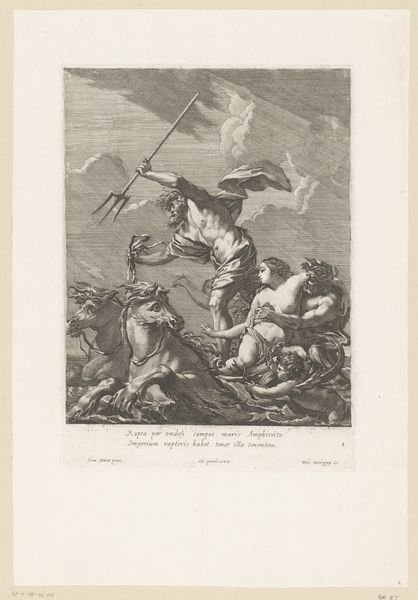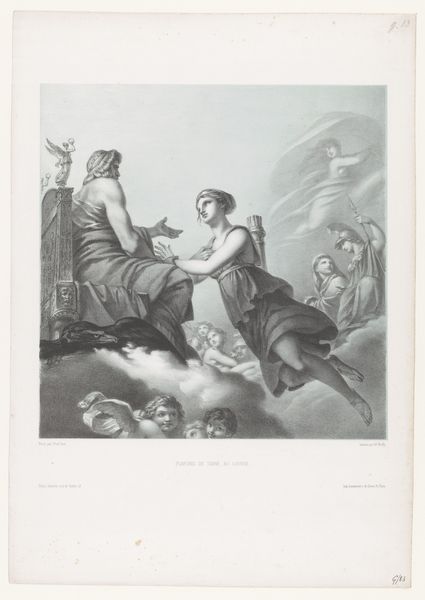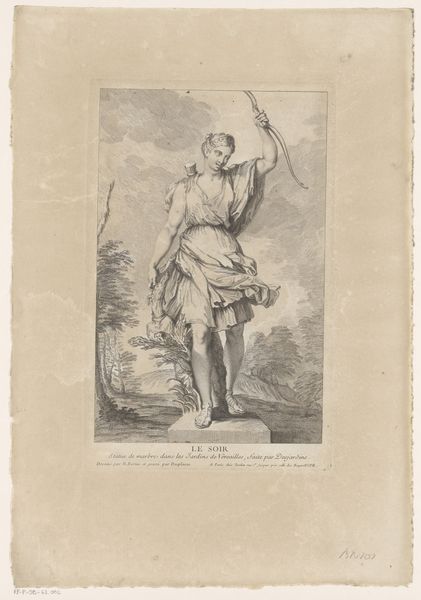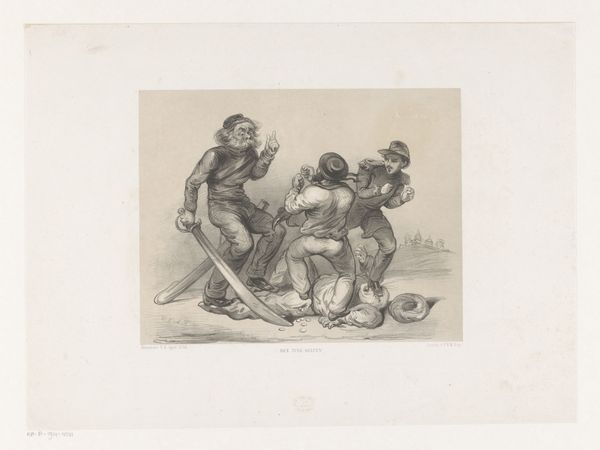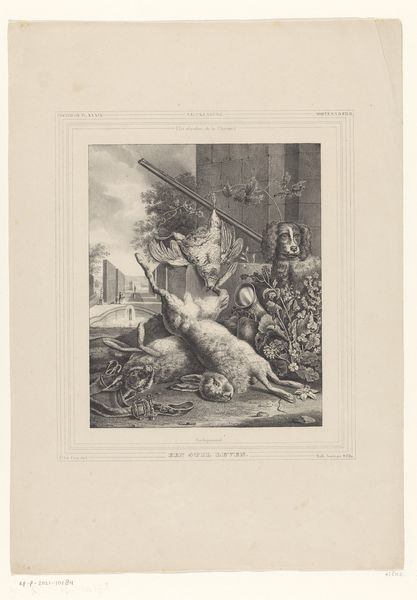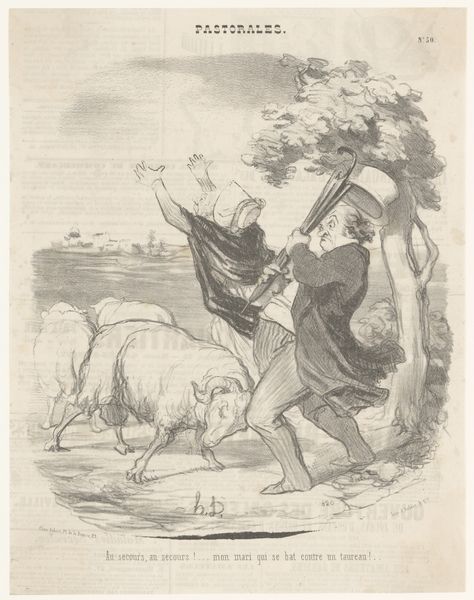
Vrouw, zittend op een rots, geflankeerd door twee biddende figuren 1731
0:00
0:00
engraving
#
allegory
#
baroque
#
old engraving style
#
history-painting
#
engraving
Dimensions: height 325 mm, width 412 mm
Copyright: Rijks Museum: Open Domain
Curator: This is a fascinating 1731 engraving by Michel Aubert, titled "Vrouw, zittend op een rots, geflankeerd door twee biddende figuren" or "Woman, sitting on a rock, flanked by two praying figures" as translated into English. You'll find it at the Rijksmuseum. Editor: It has a strangely ethereal, almost dreamlike quality despite its stark black and white medium. There’s a feeling of reverence and otherworldliness…almost theatrical. Curator: Indeed. Aubert was working within the conventions of Baroque allegory. The central woman is Thye Chvu. It's intended to symbolize divine favor and power bestowed upon the worshipper. See how those flanking figures adopt poses of worship or perhaps even supplication. Notice the instruments in each of her hands: one seems to have rounded feathers and the other is fan-like. Editor: Right. To a contemporary viewer, that supplication looks awfully like subservience. I can't help but read the power dynamic in light of colonial history—the woman perched atop that precarious looking rock, literally elevated, while others offer their full attention below. It brings up questions of who holds authority and the implications of representing such a hierarchy, specifically for non-Western subjects at the hands of a European artist during this period. Curator: The engraving employs symbolic language to construct an exotic "other." While your point is well-taken, it's essential to recall that these images operated within a specific symbolic vocabulary for its time and European market: the details are deliberately designed to spark the imagination of a Eurocentric gaze. It suggests an interaction with a distant land—it's cultural memory. Editor: I think we can look at both and still question the continued appeal—the exotic "other." Can't this engraving be regarded critically now without completely erasing the artistry, intent, and period in which it was constructed? Does our interrogation today devalue what this Baroque symbolism attempted to convey then, such as its reflections of a culture clash in the artist’s vision, in service of global economic trade between China and Europe at the time? It begs more questions. Curator: Well, this discussion itself highlights the image’s ongoing relevance. Editor: Absolutely. And understanding its position within these historical contexts deepens its impact.
Comments
No comments
Be the first to comment and join the conversation on the ultimate creative platform.
